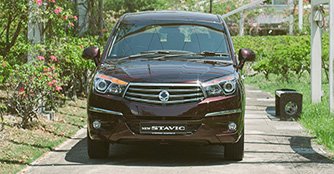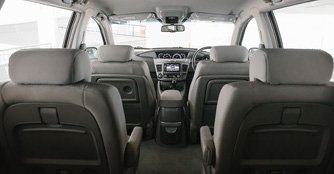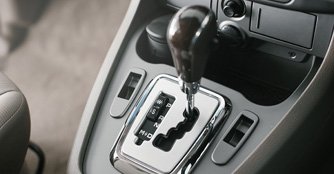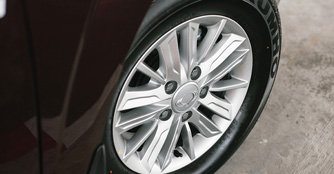Ssangyong Stavic Diesel 2.0 eXDI 7-seater (A) Review
19 Aug 2013|42,310 views
Back in 1991, Ssangyong started a technology partnership with Daimler-Benz, which was aimed at allowing Ssangyong to utilise Mercedes-Benz networks and gain footholds in new markets without having to build their own infrastructure, while giving Mercedes a competitor in the SUV market.
Ssangyong further benefited from this alliance, producing a badge engineered version of the Mercedes-Benz MB100 called the Istana and using Daimler designs in many other models, such as the Korando and the Stavic, in their engines and transmissions.
Introduced in 2004, the Ssangyong Stavic, also known as the Rodius, is a large Multi-Purpose Vehicle (MPV), replacing the Istana, and is available in seven and nine-seater configurations.
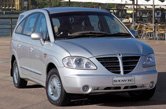 |  |
Locally, the first generation of the Stavic, if you had noticed, was deployed by SMRT as a Space MPV Taxi. And unfortunately, since its inception, the car did not receive much positive feedback with regards to its looks.
Things are about to change with the second generation of the Stavic, which was unveiled at the 2013 Geneva Motor Show, as it sports a contemporary new look that is streets ahead of its predecessor's.
Exterior
Standing at 5,130mm by 1,915mm by 1,815mm (L x W x H), the new Stavic remains as wide as the outgoing model, but is now longer and taller by 25mm and 5mm respectively.
Judging by its size, it may still be considered a beastly and ungainly design, but the restyle has given the Stavic a sharper bone structure and an improved visage up front.
 |
Taking centre stage on its face is a new grille design with links to the new SsangYong Actyon Sports, along with Korando-like swept back headlights.
The hood features sculpted lines that lend a dynamic presence and a commanding stance to the car. New front bumpers complemented with chrome highlights give the car a more prominent look, thus improving the front facet of the MPV.
With a more conservative side view that features simple chiselled lines, the Stavic no longer seems out of proportion. It features a more conventional appearance than the model it replaces, and a slightly less quirky window line.
The rear end has a practical and neat appearance too - while the previous model's Mercedes ML-inspired D-pillar remains, the tent-like design of the predecessor's rear window is replaced by a new wrap-around one that finishes off the more sophisticated look.
 |
Interior
The interior has the same basic architecture as the Rodius, but the quality has been improved, with soft-touch plastics on the dash and a leather steering wheel but the materials used still feels a little tacky.
The driver's main instrument cluster is perched centrally on top of the dashboard, which puts it out of the main line of sight, but they're clear enough to read at a glance.
To help with that, a new digital instrument panel just aft of the steering wheel replaces the row of warning lights that had the potential to confuse. They read out essential driving information such as speed and trip information, providing more convenience to the driver.
There is a rather van-like driving position that provides a good view out - useful for a vehicle of its size - the only downside was of the steering wheel that only adjusts for height.
The interior has the same basic architecture as the Rodius, but the quality has been improved, with soft-touch plastics on the dash and a leather steering wheel but the materials used still feels a little tacky.
The driver's main instrument cluster is perched centrally on top of the dashboard, which puts it out of the main line of sight, but they're clear enough to read at a glance.
To help with that, a new digital instrument panel just aft of the steering wheel replaces the row of warning lights that had the potential to confuse. They read out essential driving information such as speed and trip information, providing more convenience to the driver.
There is a rather van-like driving position that provides a good view out - useful for a vehicle of its size - the only downside was of the steering wheel that only adjusts for height.
The test car we had was a seven-seater configuration and moving back, there are two chunky, mid-mounted seats separated by a 'hallway', with the third row bench able to hold two full-sized adults or three children in relative comfort.
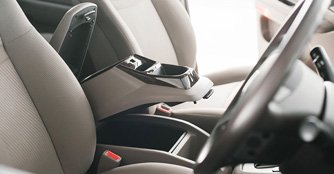
 Lots of storage space available with amenities such as this double-tiered compartment in the centre console
Lots of storage space available with amenities such as this double-tiered compartment in the centre console
Older and less agile folks will also find the Stavic easy to access, with large doors that open wide, and a relatively low floor height.
Where the Stavic excels is in the vast amount of cabin and luggage volume it offers. Even with the third row of seats in place, there's sufficient space for an entire week's grocery shopping. If you need more, simply fold the seats down or remove the entire bench.

Older and less agile folks will also find the Stavic easy to access, with large doors that open wide, and a relatively low floor height.
Where the Stavic excels is in the vast amount of cabin and luggage volume it offers. Even with the third row of seats in place, there's sufficient space for an entire week's grocery shopping. If you need more, simply fold the seats down or remove the entire bench.
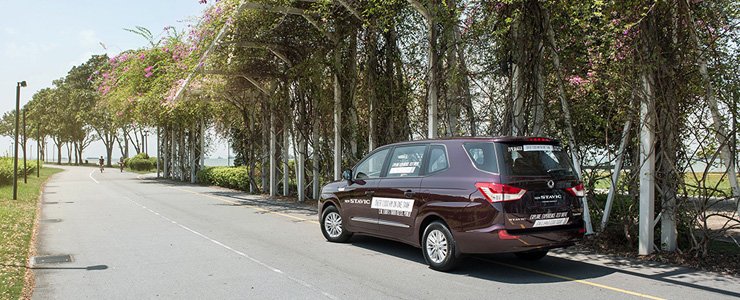 |
The Drive
Under the bonnet, Ssangyong has replaced the previous 2.7-litre diesel engine with a smaller 2.0-litre one. Good for 155bhp and 360Nm of torque, it makes light work of moving the fairly hefty Stavic.
Diesel clatter is also quite muted from inside the cabin on light throttle applications, but when pressure is applied for some urgent acceleration, the five-speed E-Tronic Mercedes-sourced transmission can be a little bit rowdy.
But as long as you drive the car gently and entirely without gusto - the Stavic performs its function well enough.
There is also the option of working the gears manually, with two buttons on the steering wheel acting as 'paddle shifters', but pay attention, as they may be mistaken for the volume controls.
Along with downsizing comes greater efficiency - with hard driving during the time we had with the car, we achieved good fuel economy of 9.9km/L - not far from its stated 12.8km/L.
The Stavic, as you would expect, suffers from considerate body roll in corners, and the steering is a tad slow, requiring a bit more of locks in corners or low-speed manoeuvres.
Nonetheless, the Stavic's soft suspension tuning makes for plenty of ride compliance, and soaks up imperfections on the roads quite easily.
Taking it away on a leisure trip, the Stavic should have no qualms about providing its driver and passengers a comfortable ride.
Conclusion
The Stavic's functionality is hard to fault, and it's now much less offensive to drive and look at.
But of course, there are other MPVs, such as the Volkswagen Touran or the Mazda5 that you can consider at this price point.
Back in 1991, Ssangyong started a technology partnership with Daimler-Benz, which was aimed at allowing Ssangyong to utilise Mercedes-Benz networks and gain footholds in new markets without having to build their own infrastructure, while giving Mercedes a competitor in the SUV market.
Ssangyong further benefited from this alliance, producing a badge engineered version of the Mercedes-Benz MB100 called the Istana and using Daimler designs in many other models, such as the Korando and the Stavic, in their engines and transmissions.
Introduced in 2004, the Ssangyong Stavic, also known as the Rodius, is a large Multi-Purpose Vehicle (MPV), replacing the Istana, and is available in seven and nine-seater configurations.
Locally, the first generation of the Stavic, if you had noticed, was deployed by SMRT as a Space MPV Taxi. And unfortunately, since its inception, the car did not receive much positive feedback with regards to its looks.
Things are about to change with the second generation of the Stavic, which was unveiled at the 2013 Geneva Motor Show, as it sports a contemporary new look that is streets ahead of its predecessor's.
Exterior
Standing at 5,130mm by 1,915mm by 1,815mm (L x W x H), the new Stavic remains as wide as the outgoing model, but is now longer and taller by 25mm and 5mm respectively.
Judging by its size, it may still be considered a beastly and ungainly design, but the restyle has given the Stavic a sharper bone structure and an improved visage up front.
Taking centre stage on its face is a new grille design with links to the new SsangYong Actyon Sports, along with Korando-like swept back headlights.
The hood features sculpted lines that lend a dynamic presence and a commanding stance to the car. New front bumpers complemented with chrome highlights give the car a more prominent look, thus improving the front facet of the MPV.
With a more conservative side view that features simple chiselled lines, the Stavic no longer seems out of proportion. It features a more conventional appearance than the model it replaces, and a slightly less quirky window line.
The rear end has a practical and neat appearance too - while the previous model's Mercedes ML-inspired D-pillar remains, the tent-like design of the predecessor's rear window is replaced by a new wrap-around one that finishes off the more sophisticated look.
Interior
The interior has the same basic architecture as the Rodius, but the quality has been improved, with soft-touch plastics on the dash and a leather steering wheel but the materials used still feels a little tacky.
The driver's main instrument cluster is perched centrally on top of the dashboard, which puts it out of the main line of sight, but they're clear enough to read at a glance.
To help with that, a new digital instrument panel just aft of the steering wheel replaces the row of warning lights that had the potential to confuse. They read out essential driving information such as speed and trip information, providing more convenience to the driver.
There is a rather van-like driving position that provides a good view out - useful for a vehicle of its size - the only downside was of the steering wheel that only adjusts for height.
The interior has the same basic architecture as the Rodius, but the quality has been improved, with soft-touch plastics on the dash and a leather steering wheel but the materials used still feels a little tacky.
The driver's main instrument cluster is perched centrally on top of the dashboard, which puts it out of the main line of sight, but they're clear enough to read at a glance.
To help with that, a new digital instrument panel just aft of the steering wheel replaces the row of warning lights that had the potential to confuse. They read out essential driving information such as speed and trip information, providing more convenience to the driver.
There is a rather van-like driving position that provides a good view out - useful for a vehicle of its size - the only downside was of the steering wheel that only adjusts for height.
The test car we had was a seven-seater configuration and moving back, there are two chunky, mid-mounted seats separated by a 'hallway', with the third row bench able to hold two full-sized adults or three children in relative comfort.
Older and less agile folks will also find the Stavic easy to access, with large doors that open wide, and a relatively low floor height.
Where the Stavic excels is in the vast amount of cabin and luggage volume it offers. Even with the third row of seats in place, there's sufficient space for an entire week's grocery shopping. If you need more, simply fold the seats down or remove the entire bench.
Older and less agile folks will also find the Stavic easy to access, with large doors that open wide, and a relatively low floor height.
Where the Stavic excels is in the vast amount of cabin and luggage volume it offers. Even with the third row of seats in place, there's sufficient space for an entire week's grocery shopping. If you need more, simply fold the seats down or remove the entire bench.
The Drive
Under the bonnet, Ssangyong has replaced the previous 2.7-litre diesel engine with a smaller 2.0-litre one. Good for 155bhp and 360Nm of torque, it makes light work of moving the fairly hefty Stavic.
Diesel clatter is also quite muted from inside the cabin on light throttle applications, but when pressure is applied for some urgent acceleration, the five-speed E-Tronic Mercedes-sourced transmission can be a little bit rowdy.
But as long as you drive the car gently and entirely without gusto - the Stavic performs its function well enough.
There is also the option of working the gears manually, with two buttons on the steering wheel acting as 'paddle shifters', but pay attention, as they may be mistaken for the volume controls.
Along with downsizing comes greater efficiency - with hard driving during the time we had with the car, we achieved good fuel economy of 9.9km/L - not far from its stated 12.8km/L.
Under the bonnet, Ssangyong has replaced the previous 2.7-litre diesel engine with a smaller 2.0-litre one. Good for 155bhp and 360Nm of torque, it makes light work of moving the fairly hefty Stavic.
Diesel clatter is also quite muted from inside the cabin on light throttle applications, but when pressure is applied for some urgent acceleration, the five-speed E-Tronic Mercedes-sourced transmission can be a little bit rowdy.
But as long as you drive the car gently and entirely without gusto - the Stavic performs its function well enough.
There is also the option of working the gears manually, with two buttons on the steering wheel acting as 'paddle shifters', but pay attention, as they may be mistaken for the volume controls.
Along with downsizing comes greater efficiency - with hard driving during the time we had with the car, we achieved good fuel economy of 9.9km/L - not far from its stated 12.8km/L.
The Stavic, as you would expect, suffers from considerate body roll in corners, and the steering is a tad slow, requiring a bit more of locks in corners or low-speed manoeuvres.
Nonetheless, the Stavic's soft suspension tuning makes for plenty of ride compliance, and soaks up imperfections on the roads quite easily.
Taking it away on a leisure trip, the Stavic should have no qualms about providing its driver and passengers a comfortable ride.
Conclusion
The Stavic's functionality is hard to fault, and it's now much less offensive to drive and look at.
But of course, there are other MPVs, such as the Volkswagen Touran or the Mazda5 that you can consider at this price point.
Car Information
Ssangyong Stavic Diesel 2.0 eXDI 7-Seater (A)
CAT B|Diesel|12.8km/L
Horsepower
114kW (153 bhp)
Torque
360 Nm
Acceleration
-
This model is no longer being sold by local distributor
All Used Ssangyong Stavic DieselThank You For Your Subscription.




































